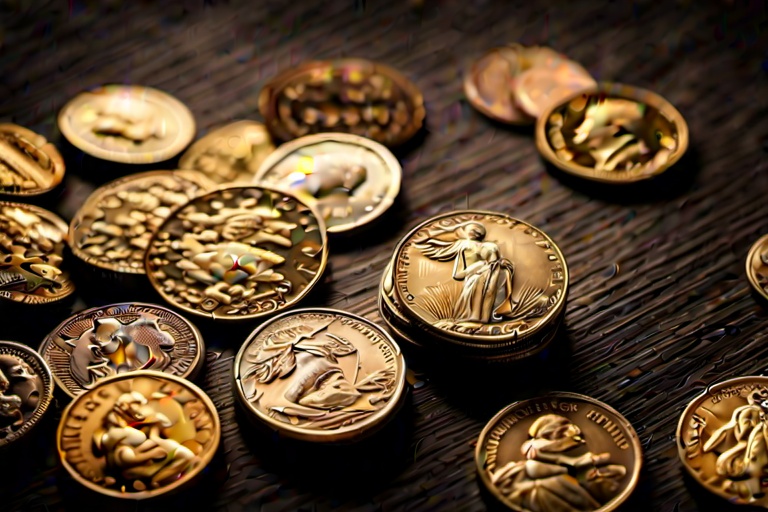The world of coin collecting is rich with history and intricacies, requiring a nuanced understanding of the many factors that determine a coin's value. Numismatists—those dedicated to the study and collection of coins, paper money, and tokens—often turn to various strategies to navigate the complexities of their hobby. One particular strategy that is gaining traction due to its remarkable effectiveness in solving problems is dynamic programming.
The world of coin collecting is rich with history and intricacies, requiring a nuanced understanding of the many factors that determine a coin's value. Numismatists—those dedicated to the study and collection of coins, paper money, and tokens—often turn to various strategies to navigate the complexities of their hobby. One particular strategy that is gaining traction due to its remarkable effectiveness in solving problems is dynamic programming.
Understanding Dynamic Programming
At its core, dynamic programming is about making algorithmic problem-solving more efficient and scalable. It relies on breaking down problems into smaller, more manageable parts, which can be solved independently and then combined to form the final solution. This approach is particularly suited to problems where the same subproblems recur multiple times. By solving each subproblem just once and storing the solution—often done through a technique known as memoization—dynamic programming avoids redundant computations, thereby saving time and resources.
Memoization: The Coin Collector’s Savings Account
Memoization is similar to putting something aside for later use, much as one might bookmark web pages or save items to a wish list while online shopping. By storing previously calculated values, we can quickly retrieve them and avoid the need to re-calculate. Applied to coin collecting, memoization can be used when assessing a collection to determine how many times a particular type of coin appears. Rather than recounting each time, we can tally each type of coin once, save the result, and then refer back to it as needed—a much more organized and effective method than counting from scratch each time.
Algorithms and Coins: A Match for Valuation
The principles of dynamic programming can be leveraged in the application of various algorithms that are beneficial for coin collection management and valuation. One such example is the counting sort algorithm, which can be optimized using dynamic programming to sort coins efficiently by value or other characteristics. By improving the sorting process, collectors and dealers can more quickly assess the worth of their collection or stock.
Patterns in Numbers: The Fibonacci Sequence Touches Coins
Dynamic programming offers tools for more than just counting and sorting. For instance, the Fibonacci sequence—prized in mathematics for the patterns it reveals—can be computed efficiently through dynamic programming. This is applied to the world of coins when we're searching for patterns and predictions that help to appreciate the potential future value of certain coins.
Subsequences and Characteristics in Collections
Furthermore, collectors often seek to identify the longest subsequence within their collection that meets certain criteria, perhaps based on a specific era, mintmark, or design attribute. Dynamic programming aids in this quest by facilitating the efficient discovery of such subsequences, thereby helping to highlight unique or particularly noteworthy aspects of a collection.
Wider Applications: From Page Ranks to Shortest Paths
Dynamic programming's applications extend beyond individual coin problems. Concepts derived from this technique inform a variety of other algorithms pertinent to coin collecting and valuation, such as the PageRank algorithm and Dijkstra's algorithm for the shortest path. Both of these employ dynamic programming strategies to achieve their ends—a testament to the adaptability and utility of this approach.
The Value of Dynamic Programming for Coin Enthusiasts
For coin collectors, dealers, and enthusiasts, understanding and applying dynamic programming is invaluable. It facilitates a more streamlined and precise approach to both valuation and analysis by promoting efficient computation and systematic problem-solving. It enhances the collector's toolkit, allowing for nuanced insights into the historical and monetary significance of each coin.
Dynamic programming offers a means to refine and advance one's numismatic practices. By applying strategies that enable optimal solutions to the common challenges of coin collecting, one can appreciate a more complete and rewarding experience in the hobby.
In summary, dynamic programming is a critical skill for those immersed in the field of coin collecting. By applying this technique, coin aficionados can efficiently compute occurrences, optimize sorting, discern patterns, and address other coin-related problems with greater precision. It's a technique that streamlines the collecting and valuation process, having broad implications not only for individual tasks but also informing wider algorithmic strategies employed in the trade. As a seasoned coin dealer and enthusiast myself, I can attest to the transformative impact of dynamic programming. Embracing this methodology elevates your numismatic pursuits, ensuring a richer, more fruitful engagement with the timeless practice of coin collecting. Whether you're just beginning to explore the depths of numismatics or you're a long-standing practitioner, dynamic programming is a powerful ally in the quest to appreciate and appraise the value of each piece in your collection.
Information for this article was gathered from the following source.


